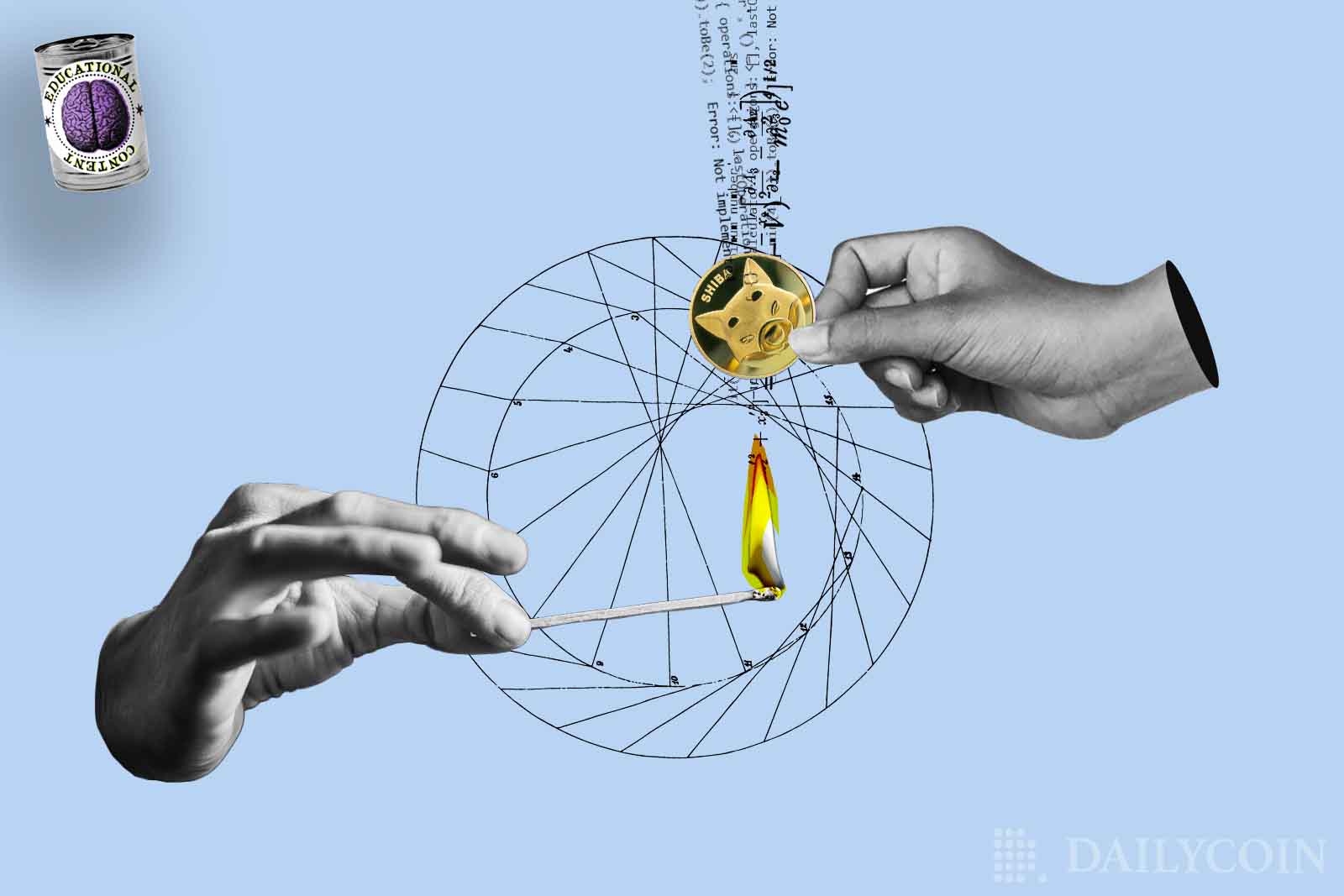
Cryptocurrencies have not only gained a lot of importance in the news and on social media, but have also attracted enormous interest from investors over the last 4 years. Considering its growing impact in socio-economics and the global financial sectors, it’s hard to call crypto new anymore.
For those keeping abreast of information in the cryptocurrency industry, it doesn’t take long to come across certain terms and innovations in the industry. One such term is “cryptocurrency burning”, otherwise called “coin burning”, or “token burning”, which is essentially a way to describe the innovative process or event that takes place on a blockchain.
In basic terms, crypto burning is a method employed by projects in which they slash or downsize a digital token’s supply. It has become a common operation among crypto token projects, and is often carried out manually as part of an attempt to increase a token’s price to benefit and attract investors.
Many cryptocurrency projects adopt crypto burning as a means of restricting the circulating supply of their tokens. For example, Binance uses an auto-burn system to regulate its total supply at 100 million BNB. So far, Binance has carried out crypto burns 20 times since the program’s launch in late 2017.
Sponsored
Over the past few years, the mechanism has been used for a wide variety of reasons. So, what is crypto burning, how does it work, and how does it affect a token’s economy? Let’s find out in this piece!
What Is Crypto Burning
To elaborate on the description above, crypto burning can be further understood as a process in which a particular number of crypto coins, usually set in advance, are intentionally and permanently removed from circulation.
Sponsored
This allocation of cryptocurrency tokens is transferred to a digital wallet referred to as a “burn address“. The reason for this, is that the burn address wallet is completely inaccessible, making it impossible for the burned coins to be retrieved from the wallet.
The process of crypto burning is generally initiated and performed by the developers of a given cryptocurrency asset, and typically involves the project buying back coins from the market, and “burning” them by sending them to the burn address.
In theory, all cryptocurrency coins can be burned, and the decision of whether or not to burn tokens often lies with the development team behind the coin. However, there are occasions when the core community of a project can initiate a crypto burn of the ecosystem’s token.
In any case, crypto burns are usually recorded as transactions on a public blockchain which anyone can review and verify at any time. Now that the general premise of crypto burning has been covered, let’s dive into how it began.
How Did Crypto Burning Begin?
Crypto burning gained popularity in 2017 and 2018, when cryptocurrencies like Binance Coin (BNB), Bitcoin Cash (BCH), and Stellar (XLM) started burning tokens to trim their total supplies, thereby boosting prices. Nowadays, it is a well-used strategy among newer cryptocurrencies that often launch with massive token supplies.
One of the main reasons crypto burning has caught on lately is that it allows projects to release their tokens at cheap prices, and subsequently increases their value artificially once they have attracted initial investors. For instance, a new cryptocurrency can launch with 1 trillion tokens worth a fraction of a cent, drawing in investors with the low price. The developers are then free to burn billions of tokens at a later date in order to raise the token’s price.
How Does Crypto Burning Work?
To all intents, crypto burning is a fairly straightforward practice. Anyone can uphold the burning process on a blockchain; the most significant act is deciding the number of coins to be removed from circulation.
The selected tokens must be bought and subsequently sent to an address with no private key—without a private key, the coins in the wallet become inaccessible, functionally removing them from the market, and leading to the complete elimination of those coins.
Generally speaking, the crypto burning process is carried out in the following order:
1. Initially, a coin holder will call a burn function, announcing the burning of a certain number of coins.
2. The contract verifies whether the person has the specified number of coins in their wallet. For this purpose, only positive numbers work.
3. In the event that the person does not hold the required number of coins, the function will not be executed.
4. If they do hold a valid number of coins, they will be extracted from that wallet, eventually updating the total supply and burning the coins.
Why Do Developers Burn Their Cryptocurrencies?
Perhaps you are wondering why big companies like Binance, Stellar, Tron, and Ripple voluntarily toss out large portions of their supply in semi regular events.
There are a number of reasons for why a project might initiate a crypto burn, but the primary goal is usually to improve the cryptocurrency’s chances of success. Below, we’ll outline a few of the other reasons why developers might burn their cryptocurrencies.
1. To Increase an Asset’s Value
Many cryptocurrency projects embrace crypto burning as a mechanism to artificially boost their token’s value as a way to reward holders and attract additional investors. Since crypto burning reduces the circulating supply of a currency and creates scarcity, its price typically increases.
Unlike fiat currencies, where governments can print money as they deem fit, most cryptocurrencies are created with a fixed supply limit. Bitcoin, for example, has a maximum coin supply of 21 million, and the more it gains momentum and mainstream adoption, the higher its price will go, as there are only a limited number of coins to go around.
To use Binance as an example once again; BNB is burned on a quarterly basis, therby reducing long-term demand for the coin, but making it attractive to those with long-term perspectives.
2. The Elimination of Unsold Coins
Typically, crypto projects will also set a limit on the number of coins that they intend to sell during their ICOs. In some cases, the quanitity that remains unsold is left in on the company’s wallet. Such projects will often simply sell those remaining tokens on the market to make a notable profit.
However, an alternative solution is to burn those unsold tokens. Having redeemed this promise, a project pledges to its investors that it will only use the funds raised for business purposes. Thus, the income from an ICO is justified by the actual demand for tokens, creating fairness and boosting trust in the market and for token holders.
3. Protection Against Spam
Crypto burning can be used to protect a crypto network from a Distributed Denial of Service (DDoS) attack, in which spam requests and transactions slow the network down, often bringing it to a halt. Rather than paying miners/validators transaction fees for confirming transactions and securing the network, some cryptocurrencies use a mechanism in which transaction fees are burned.
Users are required to burn a portion of their transactions, thereby enabling the process to take place. This model reduces the chances of spam transactions flooding the network, creating more room for healthy transactions.
4. To Pay Transaction Fees
Proof of burn mechanisms are sometimes put in place to entirely subsidize transaction fees. Ripple is one prominent example of this model. Whenever a Ripple transaction is made, a portion of that transaction is burned. With this, the user pays for a transaction, and the Ripple network as a whole benefits.
5. To Show Long-Term Commitment
Crypto projects that carry out periodic coin burns, or integrate coin burns as part of their protocol, typically attract investors due to the fact that coin burns are largely seen as an indication of long-term commitment toward the future of the project.
One of the most significant crypto burns in history was that of the Terra network in November 2021. Terra burned 88.7 million LUNA tokens, which amounted to $4.5 billion USD at the time. Terra also burned a further 29 million LUNA tokens, worth $2.57 billion, in February 2022.
How Does Crypto Burning Affect a Token’s Economy?
As mentioned above, crypto burning directly affects the dynamics of a token’s supply and demand. By reducing the overall number of tokens in circulation, burns make the token scarcer, and serve to boost the cryptocurrency’s valuation.
In this way, crypto burning leads to increased token scarcity, which results in higher demand, hence balancing the supply-demand cycle of the token economy.
Another significant way that crypto burning affects token economy is seen in the case of stablecoins. Crypto burning can be utilized to maintain the price peg of a stablecoin (cryptocurrencies whose value corresponds to another asset, such as the U.S. dollar) by burning or minting new tokens as necessary. Through this model, the authority overseeing the stablecoin can influence the asset’s price to keep it at a near-constant, stable level.
For example, earlier in May, Tether burned a total of 3 billion USDT tokens—using an account referred to as ‘Tether Treasury’—in two consecutive burns. The burn was utilized to boost the stablecoin after negative infuences on Tether saw it depeg to $0.95.
Final Thought
Crypto burning can be extremely beneficial for holders, prospective investors, and projects alike, both reducing inflation and incentivizing traders to hold. Such burns are useful in maintaining balance in a token’s economy, and have a range of uses for developers. However, it is not necessary for all cryptocurrencies to be burned, and typically only those assets with excessive supply elect to undergo the process.
